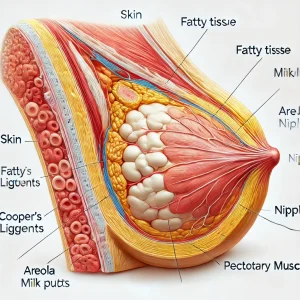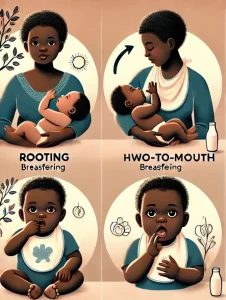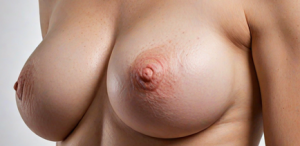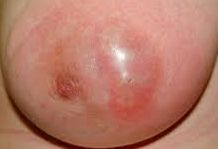Essential Breastfeeding Tips for New Moms: Expert Advice & Support
Breastfeeding is an incredibly rewarding experience for mothers and their babies. Breastfeeding is the process of giving milk from a woman’s breast to a baby. It provides essential nutrients for growth and development and helps strengthen the bond between mother and child. Breastfeeding has many benefits, such as improved immunity and digestion, as well as enhanced cognitive and emotional development. It can also help mothers lose weight and reduce the risk of certain cancers. With the right support and guidance, breastfeeding can be a beautiful and fulfilling experience for both mother and baby. Please keep reading for details on the following topics:
The breasts
Care of the breast
Preparing for breastfeeding
Hunger cues
Stimulating the breasts to produce milk
Benefits of breastfeeding
Disadvantages of breastfeeding
Contraindications to breastfeeding
Steps to breastfeeding
Latching
Advice for breastfeeding mothers
Signs that baby is not receiving breastmilk
Weaning
Challenges during breastfeeding
When to seek urgent medical care
Breast engorgement
Mastitis
Breast abscess

THE BREAST
The breast is an essential organ in the human body, providing essential nutrition to infants and playing an important role in female identity and sexuality. The breast also has a major role in the reproductive system, helping to regulate hormones and producing milk for lactation. Anatomically, the breast consists of glandular and fatty tissue and can be affected by a range of medical conditions. Breast health is an important part of overall health, and breast cancer is one of the most common types of cancer in women. Regular screenings and self-exams are important for maintaining breast health.

CARE OF THE BREAST FOR BREASTFEEDING MOTHERS
Breastfeeding is one of the most important aspects of caring for a newborn. It is important for mothers to be informed about best practices when it comes to breastfeeding, such as the importance of proper positioning and latching, the importance of a healthy diet, and the potential risks associated with improper breastfeeding. This guide will provide an overview of breast care for breastfeeding mothers, including tips on how to keep the breasts healthy and comfortable throughout the breastfeeding journey.
When breasts are full, the excess breast milk must be expressed to prevent breast engorgement
The breast milk expressed can be refrigerated or frozen for future use
When nipples become cracked or dry, colostrum or special breast cream can be applied for nipple protection
Skin breakdown must be treated urgently to avoid complications
CARE OF THE BREASTS FOR NON-BREASTFEEDING MOTHERS
Care of the non-breastfeeding breasts
How to avoid breast milk production
Wearing tightly fitting bras except whilst sleeping or in the shower
Avoiding nipple stimulation
The application of ice packs to the breasts
Prescribed lactation suppression medication
Medication such as paracetamol or NSAIDs for pain relief
HOW A WOMAN CAN PREPARE FOR BREASTFEEDING

Breastfeeding is one of the most natural and beneficial ways to feed your baby. To ensure that your baby gets the best start, it is important to properly prepare your breasts for breastfeeding. This involves following a few simple steps that help to ensure that your breasts are ready to provide your baby with the nourishment they need. In this article, we’ll discuss the basics of preparing your breasts for breastfeeding, so you can be sure your baby gets the best.
Make plans to breastfeed
Ask the doctor or midwife questions about breastfeeding
Attend breastfeeding classes and support groups to manage breastfeeding difficulties
Talk to relatives and friends about breastfeeding
Purchase breastfeeding items, such as breast pads, nursing bras and breast pumps
Ask for help with household chores in order to concentrate on feeding the baby
Learn about the fundamentals of breastfeeding
Be prepared to start breastfeeding shortly after delivery
HUNGER CUES FOR BABIES

Hunger cues in babies can be difficult to decipher, but it’s important for a parent to understand the signs of hunger so they can respond quickly. By recognizing these cues and responding quickly, parents can help ensure their baby is getting the nutrition they need.
SIGNS THAT A BABY IS HUNGRY
Fussiness
Squirming
Gnawing onto the hands
Moving the head in the direction of the woman’s chest, as if looking for breast milk
Crying
WAYS TO STIMULATE THE BREASTS TO PRODUCE MILK
More frequent breastfeeding rouses the breasts to produce more milk.
Eating the correct foods drinking sufficient fluids
Allowing the baby to feed from the breast instead of a bottle
Seeking help when incurring challenges
BENEFITS OF BREASTFEEDING TO THE BABY
Breast milk is always at the correct temperature
The breast milk is created especially for babies and is quite useful for premature babies
A child’s risk for sudden infant death syndrome (SIDS) is reduced
The child’s risk of developing overweightness, illnesses of the heart and diabetes will be lower
Crucial nutrients necessary for optimal growth and development is found in breastmilk
Breastmilk contains antibodies which strengthen the baby’s immune system and lowers the risk of infections
Fewer gastrointestinal illnesses such as vomiting and diarrhea have been reported in breastfed babies
Breast fed babies are more attached to their mothers and smarter than formula fed babies
Breast milk is always available and on hand
BENEFITS OF BREASTFEEDING TO THE MOTHER
Through breastfeeding, the woman’s body is able to regain her condition before the pregnancy
The risk for breast cancer is reduced
Breastfeeding stimulates the body to release hormones, which helps the uterus contract and decrease bleeding
Through breastfeeding a woman is able to shed the weight gained, thus lowering the risk for certain health problems, such as breast cancer, obesity and diabetes
Breastmilk comes at no cost to the mother is readily available
Breastfeeding helps the woman save time since there is no need to sterilize bottles or prepare the breast milk
Through skin-to-skin contact, the mother is able to form a close bond with baby
DISADVANTAGES OF BREASTFEEDING
Women with flat or inverted nipples may have difficulty breastfeeding
Breastfeeding may physically wear out the woman
The mother is no longer able to enjoy caffeine because it can cause the baby to be agitated
Breastfeeding is not recommended for all women
Lack of privacy in public (self-conscious women may not feel comfortable breastfeeding in public)
WOMEN WHO SHOULD NOT BREASTFEED
Have active tuberculosis
Had breast surgery
Have certain infections such as HIV and HTLV
Receiving radiation and chemotherapy
STEPS TO BREASTFEEDING
Before commencing the feed, it is wise to have some water or juice to remain hydrated
Be calm and relaxed to help the breast milk flow
Make sure the room is quiet and warm
Keep the room darkened. Bright light makes it hard for newborns to open their eyes
Ensure that the baby is fully awake
Support the back and arms with as many pillows needed
Elevate the feet on a stool
Find a comfortable breastfeeding position
With the head and body in a straight line, turn baby facing the breast
Allow the baby’s tummy to rest against the mother’s tummy, whilst the nose in line with the nipple
With one hand, hold the breast using a “C” (the fingers beneath the nipple and the thumb above) or “U” hold (the fingers on the inner side and the thumb on the outer side)
Support the baby by placing the other arm behind the baby’s back and the hand supporting the head
Rest the nipple on the baby’s lower lip until he/she opens the mouth wide
As the baby is quickly brought to the breast (avoid bending over the baby) use the other hand to support and guide the breast into the baby’s mouth
Allow the entire nipple and part of the areola to enter the baby’s mouth
If the nose appears to be blocked by the breast, draw baby nearer to allow him/her to clear the nose by moving the head backwards
Offer the breast until the breast feels empty and baby pulls off the breast or loses interest in breastfeeding
To break the latch, insert the pinky or index finger in the corner of the baby’s mouth and gently hook the breast away
Help the baby expel any swallowed air by gently patting the back
After the baby burps, offer the breast again
Baby may need to be stimulated if he/she falls asleep before finishing breastfeeding
Lay baby to rest on the back with the head tilted to the side
INFANT LATCH
Breastfeeding is a natural and important part of infant health and development. Proper latching on to the breast is essential for successful breastfeeding. This section will provide an overview of latching on to the breast, discussing the importance of proper latching, tips for promoting successful latching, and common problems associated with latching. With the right techniques and support, infant latching on to the breast can be a positive experience for both mother and baby.

HOW TO DETERMINE PROPER LATCH
The baby’s mouth should be spread outward and not folded in
The baby’s ears will wiggle, and a swallowing pattern will be heard
A proper latch helps prevent problems such as sore nipples, blocked milk ducts, breast infections, and poor infant weight gain
An improper latch is painful and frustrating
ADVICE FOR BREASTFEEDING MOTHERS
Breastfeeding is one of the most important things a mother can do for her baby. It is a natural, healthy, and convenient way to nourish and bond with your infant. With the right information and support, mothers can feel confident in their ability to successfully provide the best nutrition for their baby.
Everything the mother eats will be passed onto baby via the breast milk
Avoid alcohol, tobacco and drugs when breastfeeding
It is wise to seek advice from a doctor before taking any kind of medication, herb or supplement
Eating healthy and balanced meals will provide the necessary vitamins and minerals that the baby needs
Continuing prenatal vitamins is recommended to restore nutrients in the body
A baby should be breastfed on demand or at least every 2 to 3 hours (8 to 12 times daily), for as long as the baby wants
Be sure to breastfeed baby on demand for at least 6 months
Do not let baby spend more than 3 hours without a feed to avoid jaundice
A sleeping baby will need to be waken up for feeds
A different breast can be used for each feed
Take advantage of the time that baby sleeps to rest
Exercise is a very good way to manage stress and improve energy level
It is not advised to eat gas forming foods which can make baby fussy
When baby reaches 6 months old, one can start supplements or other food
Avoid supplementing a breastfed baby’s diet with formula, food, or water during the first 6 months
It would be wise to wear supportive bras (affordable ones) to help promote comfort. Refrain from using bras containing wires which can constrict the milk ducts and prevent milk from flowing properly in the breasts
Be sure to change breast pads frequently (when they are soiled) to minimize humidity around the nipples which can harbor germs
Wash and dry the hands properly before attempting to breastfeed
Clean the nipples carefully with plain water and cotton or soft wash cloth before breastfeeding
DO NOT apply any soap or alcohol products to the nipples which can cause irritation to same, especially when breastfeeding
SIGNS THAT THE BABY IS RECEIVING ENOUGH MILK
A few rapid sucks will be taken followed by longer sucks
The cheeks remain rounded out and not sucked in
Baby will be heard swallowing
Baby remains calm during the feed
Baby appears satisfied after the feed and falls asleep
Weight is being gained steadily
Baby will let go of the breast when full
Baby has at least 6 wet diapers a day
https://www.youtube.com/watch?v=m50PTFmmlxw&t=83s
CHALLENGES DURING BREASTFEEDING
Difficulty latching on– The woman can be assisted by a nurse or lactation specialist with appropriate positions to try
Biting the nipple by teething a baby– The mother can express a firm “no” to the baby and can also give the baby teething items to chew on
Poor milk let-down– The woman can try drinking plenty water and ensuring that one eats properly will help the breastmilk come
Leaking breast milk– This means that the breast milk is available to feed baby. The woman can try expressing if baby is not hungry
Low milk supply– The frequency of breastfeeding can be increased to grow the milk supply
Arousal during feeding– This is how the body prepares for breastfeeding
Being sick– Minor illness like a cold or flu do not prevent one from breastfeeding
Feeling depressed– This can be caused by the increase in hormones. If feeling overwhelmed the woman can speak to someone
Breast and nipple changes– The size of the breast and areola grows, the nipples become a darker color and more protruding as the body prepares to produce breast milk
Sore or cracked nipples– This occurs when the baby is not properly latched onto the breast. A few drops of breast milk can be rubbed onto the nipple and areola then allowed to be air dried to help increase moisture and soothe the soreness
Engorged breasts– This occurs when the breast produces more milk than the baby uses. The woman can try expressing the excess milk
Blocked milk ducts– This can cause an aching lump in the breast. It would be wise for the woman to gently rub the affected area toward the nipple before and during feeding. The woman can also use the affected breast first, when feeding baby, to help empty the breast
Breast infections such as thrush– It would be wise to see the doctor for advice and treatment
Mastitis– This is a hard-painful lump in the breast. It would be wise to seek medical advice and treatment
BREAST ENGORGEMENT

Breast engorgement is a common condition experienced by many breastfeeding mothers. It occurs when the breasts become swollen, tight, and painful due to an overabundance of milk. If not managed properly, it can lead to other health complications such as blocked milk ducts, mastitis, and low milk supply. Fortunately, there are several steps that can be taken to prevent and manage breast engorgement.
SYMPTOMS OF ENGORGED BREASTS
Swollen, firm, hard, shiny, warm, painful breasts and slightly lumpy to the touch
Flattened nipples and firm areola which makes it hard for baby to latch on
Temperature of 100.4°F (38°C) or higher
Inflamed lymph nodes of the armpits
PREVENTION AND TREATMENT OF ENGORGED BREASTS
Ensure that the breasts are empty by breastfeeding and expressing the milk as necessary
Ensure that breastfeeding is done on demand, such as, when baby shows signs of hunger
Apply a cool compress for a few minutes before beginning to breastfeed of express to decrease the flow of milk. (never apply packs directly against the bare skin)
Increase the frequency of breastfeeding
Be sure to empty the breasts at a time
It would be wise to consult with a doctor regarding medication to help lessen the pain and swelling
Wearing a comfortable bra also may help with reduce pain
Cold compresses can be applied to the breast after feed or expressing session to lessen pain and swelling
MASTITIS

Mastitis is a common bacterial infection of the mammary glands which can affect women and occasionally men. This infection can lead to pain and swelling of the breast, as well as the production of abnormal milk. Left untreated, mastitis can progress to a more serious infection and can even cause permanent damage to the mammary glands. Treatment of mastitis is typically with antibiotics and may involve other treatments such as warm compresses and proper breastfeeding techniques.
Breastfeeding usually helps to clear up the infection
The breast milk is safe for baby to drink, because any bacteria in the milk will be destroyed by the baby’s gastrointestinal liquids
CAUSES OF MASTITIS
Bacteria enter the breast through a cracked or sore nipple
Failing to empty the breast completely may also contribute to mastitis
SYMPTOMS OF MASTITIS
Mastitis usually starts as a painful area in one breast
Redness and increased warmth to the touch
Fever, chills, and aching body parts
Swollen, painful lymph nodes in the armpit next to the infected breast
A fast heart rate, and flu-like symptoms
TREATMENT OF MASTITIS
Applying warm or cold packs to the infected breast for about 15 minutes three times daily
Help increase the flow of milk by massaging or placing a warm cloth over the affected breast (never apply packs directly against the bare skin)
To decrease milk flow, a cold cloth can be applied
Pain medication such as Ibuprofen (such as Advil) along with Acetaminophen to reduce pain, inflammation and fever
Breastfeeding or expressing to prevent the bacteria from collecting in the breast
Oral antibiotics to destroy the bacteria causing the infection
Before feeding the baby, it would be wise to express a little from the affected breast to soften it and make it easier for baby to latch
BREAST ABSCESS

Breast abscess is a condition that occurs when a collection of pus forms in the breast tissue due to an infection. It typically affects women, although it can occur in men as well. Symptoms may include redness, swelling, pain, and warmth of the affected area. In some cases, the abscess may need to be drained surgically in order to clear the infection and reduce the risk of further complications. Treatment usually involves antibiotics and proper wound care.
SYMPTOMS OF BREAST ABSCESS
A hard and painful lump on the breast
A swollen area on the breast
Flu-like symptoms
BREAST ABSCESS TREATMENT
Ultrasound scan of the breast for proper examination
Draining the abscess under the guidance of an ultrasound
Culture of the fluid to identify the type of infection
Oral antibiotic treatment to destroy the bacteria causing the infection
Ibuprofen (such as Advil) along with acetaminophen to reduce pain, inflammation and fever
Breastfeeding or pumping regularly to keep the breast empty
Change breast pads when they are wet
Help relieve pain and swelling by placing a warm or cold cloth over the affected breast (never apply packs directly against the bare skin)
Drink plenty fluids and rest as much as possible
Wash away the pus from the nipple and allow to air dry before putting on a bra
Seek advice from a doctor or a lactation specialist
WHEN TO SEEK URGENT MEDICAL CARE
It is important to know when to seek urgent medical care, as delaying appropriate treatment can lead to further health complications. If you or your baby experience any of the following symptoms, you should seek medical help immediately. If you have any doubts about whether you should seek medical care, it is always better to err on the side of caution and consult with your doctor.
Increasing pain in one area of the breast
Inflammation or redness to one area of the breast
Discharge from the nipple or another area of the breast
A fever of 101°F (38.3°C) or higher
Crack, bleeding nipples or sores to the nipples unrelieved by home treatment
Swelling to the lymph nodes of the neck or armpit
The baby is not accepting feeds and has any of the following symptoms:
A temperature of 100.4°F (38°C) or higher
Fussiness or sleepiness that interferes with breastfeeding
Weakness, lethargy, or lack of interest in feeding
Thick, white patches in the mouth and cheeks, which are signs of a yeast infection (thrush), or signs of a diaper rash
Insufficient weight gain or seems overweight for the age
Having no wet diapers for more than 6 hours
Having problems latching on to the breast
Disclaimer: The information provided in this content is for general informational purposes only. It is not intended as medical or healthcare advice, diagnosis, or treatment. Always seek the advice of a qualified healthcare professional with any questions you may have regarding a medical condition or healthcare decisions.


I precisely desired to say thanks once more. I’m not certain the things that I would have carried out without the type of thoughts shown by you relating to such a problem. It had been a very intimidating concern for me, nevertheless taking a look at this well-written manner you solved that made me to leap over contentment. Now i am happy for your guidance as well as trust you recognize what a great job you are always doing instructing people all through your blog. More than likely you haven’t met all of us.